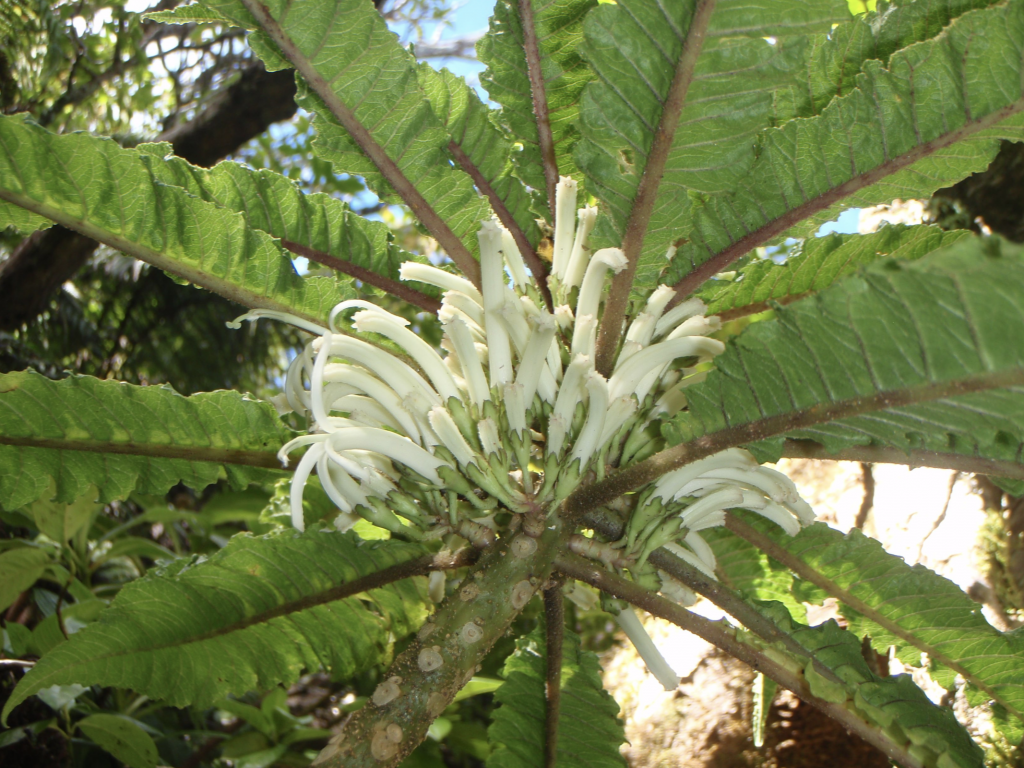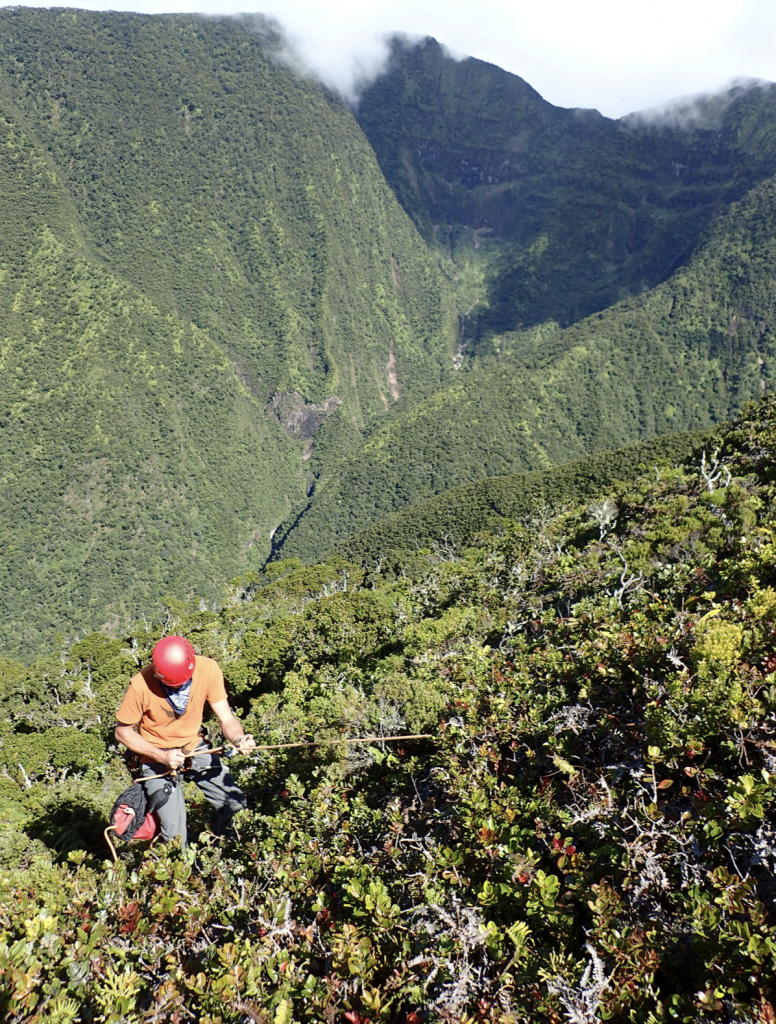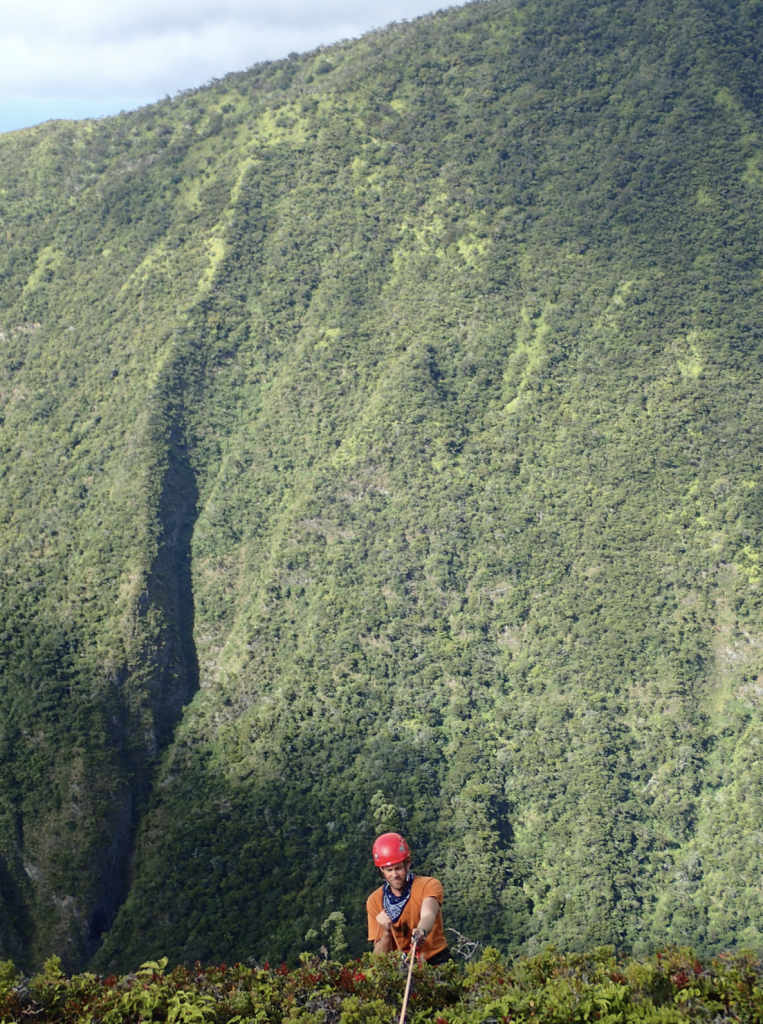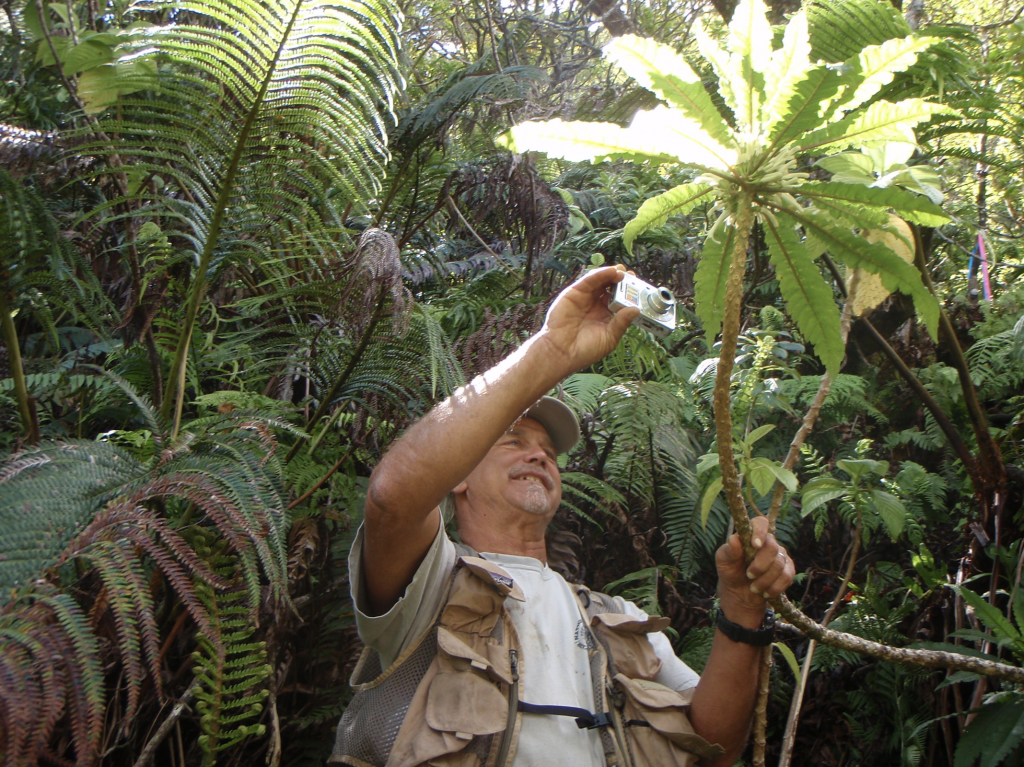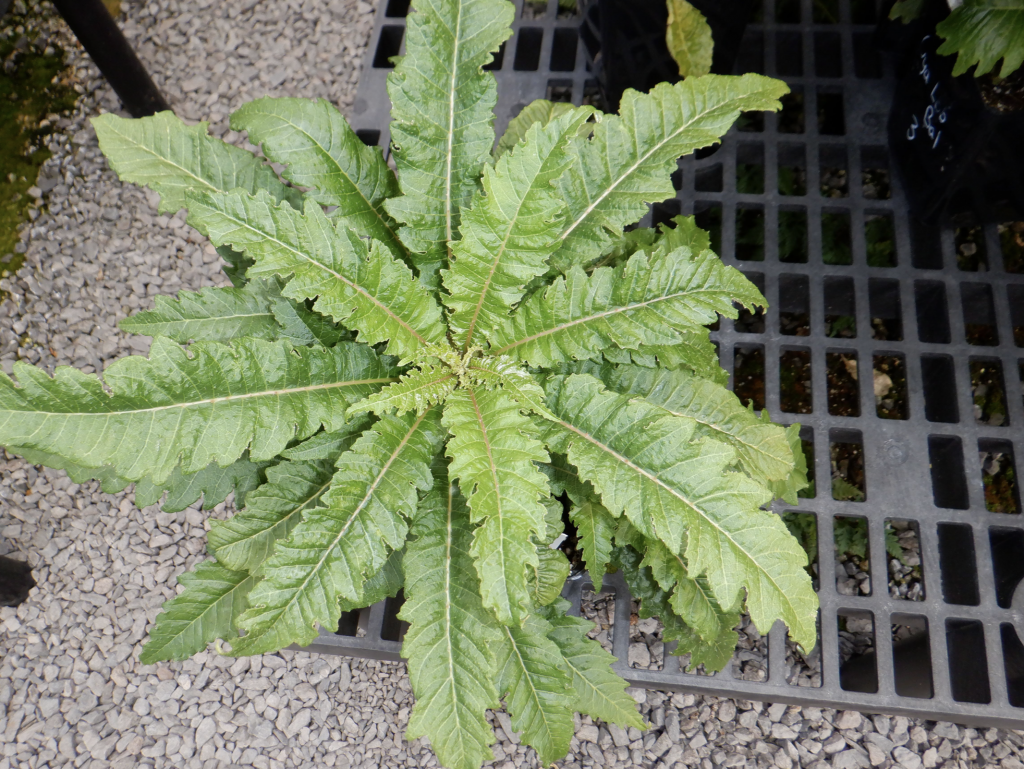New Native Hawaiian Flower Discovered in West Maui
Hawai‘i’s rich collection of unique, native plant species has added a new member to its ranks: a new species has been described for the first time.
Only one individual of the new species, named Cyanea heluensis, is currently known from a remote location in West Maui. While exploring the steep slopes of Helu above Lahaina, botanist Hank Oppenheimer and colleague Jennifer Higashino found a single large plant in the deep shade of a healthy ʻōhiʻa forest.
Cyanea heluensis is related to other native plants known as hāhā, but has unique leaves and gently curved, long, white flowers. The flowers of this and other related species are pollinated by birds, and the orange fruits are attractive to fruit-eating native birds that would disperse the seeds.
Since being found, numerous surveys using ropes to access steep cliffs have failed to locate any more individuals, making the conservation of the only known plant critically important. Before a goat could eat the plant or another catastrophe caused immediate extinction, Hank Oppenheimer applied a special paste designed by Nellie Sugii, a horticulturalist at Lyon Arboretum, to produce new growth on the plant. The new growth was successfully transported to Maui’s Olinda Rare Plant Facility, where it is being propagated.
Protections are urgently needed to keep rare, wild plants like Cyanea heluensis alive.
Rats are a common problem for Hawai‘i’s rare plants, as they can devour fruits before seeds can be dispersed. Slugs will eat flowers and young seedlings. Non-native hooved animals like goats and deer, which roam across millions of acres in Hawai‘i, will eat native plants and destroy the forest they need to survive.
Cyanea heluensis is one of 250 species managed by the Plant Extinction Prevention Program, a project of the Pacific Cooperative Studies Unit at the University of Hawai‘i.
With funding support from the US Fish and Wildlife Service and the DLNR, PEPP works to prevent the extinction of Hawaii’s native plants.
In the case of Cyanea heluensis, botanists returned on many trips to install protections and attempt to collect seeds that could be grown offsite.
“Dozens of native plants like this one are now only kept alive in nurseries,” says Matthew Keir, DLNR Botanist. “Just one natural disaster, like a hurricane, hitting a nursery could cause the extinction of many rare plants,” he said.
“So, few people study and know the flora and fauna well enough to recognize when a new species of plant, insect or bird lies in front of them,” said PEPP Botanist Steve Perlman. “Saving the plants that have evolved all over the world is so important. The age of discovery is not over! These jewels of creation represent the wonderful diversity of the planet earth and we will never see their like again.”
“We should treasure our planet and try to save each and every species. Conservation of our ecosystems and the species that depend on them is vital to mankind’s survival too,” says Perlman.
DLNR is seeking Capital Improvement Project funding to build a protective fence to keep out deer, goats, and pigs across thousands of acres across West Maui, including the last known Cyanea heluensis.
This project is part of the Statewide Watershed Initiative, which seeks to protect 30% of Hawaiʻi’s native watershed forests by 2030.
In addition to keeping thousands of native Hawaiian plants and wildlife species protected, forests dramatically increase the amount of fresh water collected, because forests absorb cloud moisture. Native forests also hold the soil and prevent erosion. State officials say protecting forests like those in West Maui saves world-famous beaches and vibrant coral reefs from dirty runoff.



